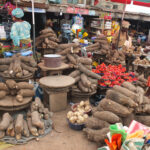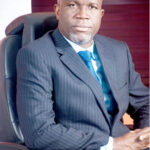The managers of Nigeria’s economy need an urgent reappraisal of their toolkit to bring it up to date with current realities. The economy today faces a sustainability challenge given all the indicators, from revenue to expenditure, debt servicing, and investment levels.
The biggest challenge facing them now is simply how to make the economy perform better going forward and still maintain overall, macro stability. They have to create the capacity to convert most of the country’s current largely informal economic activities into fiscal revenue.
- After Daily Trust story: Buhari fires IGP Adamu over poor management, escalating insecurity
- Osinbajo absent as Dare opens 2020 National Sports Festival
Sustainability holds us in check. It has to do with this: if we maintain the same course of action, whether as consumers, producers, or managers of the economy, what will the long-term impact be? In other words, if the managers of the economy maintain it on the same trajectory as it is now into the future, what will happen to all of us? What will happen to welfare?
Governments through policies build or strengthen economies to produce goods and services to meet needs over time. Inadvertently, they can drive the economy off the course leading to recursive trends through wrong actions or poorly coordinated measures. One of the ways to measure that empowerment or capacity for the economy is simply to look at how much is being invested in it.
One measure is capital formation, which includes capital expenditure for both the government and the business sector. Nigeria performs poorly on this score. As a percentage of GDP, capital formation in Nigeria ranged between 14.9 per cent and 16.2 per cent in the period 2010 -2017.
For India, this figure ranged from 31.58 per cent in the second half of 2018, to 30.46 per cent in early 2020. Even with the ravages of COVID-19, it only fell to 21.88 per cent by the middle of last year. Over time, these two economies cannot grow equally. Even Ghana generally performs better: from 2013 to 2017, the gross capital formation ratio to GDP ranged from 21.5 per cent to 30 per cent.
On this score, the picture of the Nigerian economy is fraught with grimness. For the year 2020, available data shows that as much as 81 per cent of revenue or 31 per cent of the government’s expenditure went into servicing the nation’s debts. This meant Nigeria had to borrow to keep the government running and implement some capital expenses. This ratio has been reduced to about 42 per cent and 25 per cent, respectively, for this year. That is, a quarter of all of the government’s expenditure will go into debt servicing.
While the debt-to-GDP ratio may be relatively low and below the fiscal responsibility act and threshold prescribed by renowned global bodies for emerging economies like Nigeria, the debt-service ratio reinforces the bleak outlook on fiscal flexibility.
Amounts used to service debts represent resources that could have been put into productive use today but are being used to service debts contracted in the past. Well, that figure alone does not give a definitive picture, depending on what those debts being serviced now were used for. If they were deployed in the past to beef up productive capacity, that adds to sustainability and could help raise the production base of the system.
We do not have an answer to that yet, but we see that in the same year only 18 per cent of the expenditures for that year went into capital expenditure. Juxtapose this with the fraction that went into debt servicing in the same period, and you will see a disproportionate allocation of resources and an obvious threat to the future stability of an economy.
The debt burden is once more a critical issue in Africa, with average debt-to-GDP ratios of about 70 per cent to 75 per cent. There is a resurgence of high indebtedness across the continent, with debt repayment or servicing eating into the fabric of African economies, threatening stability and sustainability.
Countries with higher debt-to-GDP have lower and sustainable debt service ratios. This is why there is a need for Nigeria to flip the coin, cut down government bogus expenditure which the country cannot afford, prime the private sector and household to drive economic growth.
In fast-growing economies, household and corporate sector debt-to-GDP ratios are typically higher, compared to Nigeria where household and private sector are squeezed out of the credit market, as public sector borrowing crowd out private sector lending.
The point here is that debts and the other budgetary allocation issues are purely fiscal decisions. They represent clear choices made by those entrusted with the management of the economies.
Just as there are good choices, there are also bad ones. Translating this into debt categories, there are good debts, which are taken to invest in critical areas to strengthen the economy to become more productive. Conversely, there is also a bad debt, the type that has been euphemistically referred to as “hamburger debt”. Any debt taken to meet recurrent needs today will fall under this category. Such a debt adds little or nothing to the strength of the economy. If you borrowed to buy a hamburger yesterday, it is gone. Do not look for it tomorrow!
Hamburger economies with more populations, including China, have fewer ministries and so spend lower percentages of their GDP and revenue on recurrent expenditure. Nigeria cannot afford to do otherwise. China, as big as it is, has about 21 institutions designated as Ministries; Nigeria has 28. This year, Nigeria has budgeted N5.6 trillion on recurrent expenditure, but N4.1 trillion on capital expenditure. It is a choice.
An interesting scenario in last year’s ACTUAL revenue figures is the declining position of oil as a revenue source for the country. Oil accounted for 39 per cent of the government’s revenue, the non-oil sector generated 32 per cent , while 29 per cent came from Other Revenue sources, including grants.
That is a significant change and a pointer to future trends. Up until now, a popular size and scope used to situate oil in stories on the Nigerian government’s revenue always presented oil as accounting for up to 70 per cent of the figures. Now, that is changing, perhaps faster than had been projected.
This means that the non-oil sector of the economy is the variable in the equation with a greater potential for increase. This is where output growth will come from. Included in this are agriculture, manufacturing, ICT, the creative economy (Nollywood, music), etc. The non-oil sector holds the ace for sustainability in the current fiscal fiasco staring the nation in the face.
The economy must grow to provide a base for higher revenues for all the stakeholders: governments, firms, households, and individuals. There is no magic about this.

 Join Daily Trust WhatsApp Community For Quick Access To News and Happenings Around You.
Join Daily Trust WhatsApp Community For Quick Access To News and Happenings Around You.


